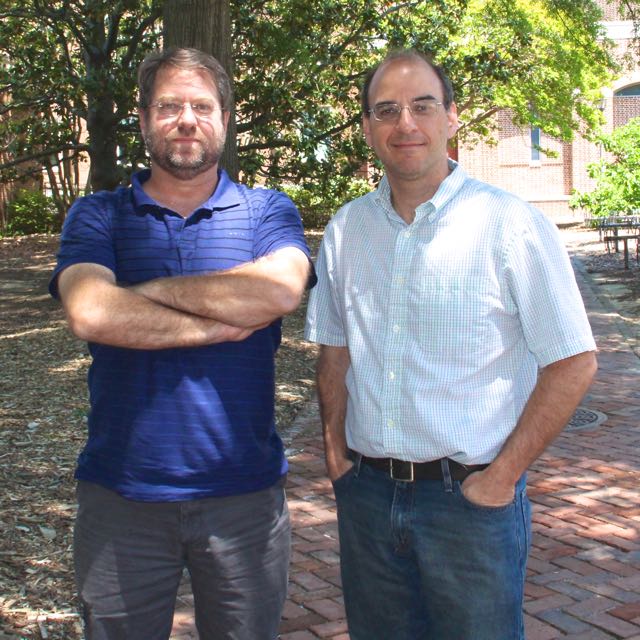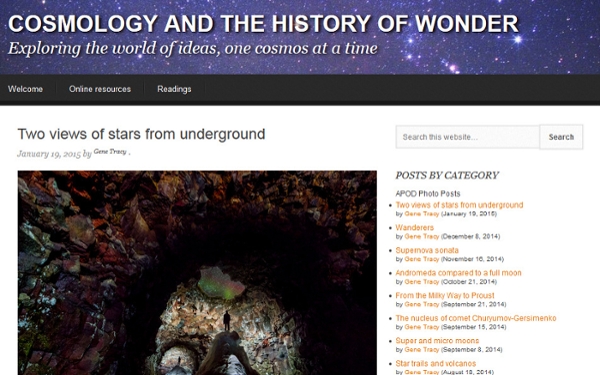COLL 100: A Lesson in Storytelling
 Out with the old, and in with the new.
Out with the old, and in with the new.
The familiar phrase rings true, as the campus prepares to replace William & Mary’s current general education requirements (GER’s) with a reinvented College Curriculum. The incoming fall freshman class will debut the initial installment of the curriculum, the COLL 100 courses. In an effort to maintain students’ ability to communicate in the modern world, COLL 100 will prepare students to articulate themselves through non-traditional, non-written mediums.
IT's Involvement
While these non-traditional modes of communication span an amalgamation of resources, they may require the use of technology. A number of William & Mary’s professors have prior experience incorporating technology in the classroom. However, to many, COLL 100 marks unchartered territory.
This is where Information Technology’s Pablo Yanez and Mike Blum enter the picture. The two senior academic technology specialists are tasked with aiding professors as they navigate the creative boundaries of the COLL 100 courses.
To support professors, Blum and Yanez are holding sessions for faculty where they are able to provide insight into specific incorporations of technology in the classroom.
“No matter what professors do, there are resources for it,” Blum explains. “There are three components professors need to consider: they need to be able to model the type of communication through a sample, be able to evaluate projects for a grade, and evaluate time constraints.”
In addition to the hands-on demonstration sessions, Yanez and Blum are also developing a support website. This site will serve as a repository of information for professors to reference as they explore new ideas.
Not just about Technology
The COLL 100 requirement, simply put, is an ideas-based class. It aims to conjure the breadth of skills essential to effective communication in a modern environment. The overarching goal is to introduce alternative means of communication to W&M students, and to equip them with the tools to master non-traditional articulation.
“It’s not just blogs that we are working with professors on,” adds Yanez, “it can be a play, podcast, or oral presentation. The idea is to tell a story.” The COLL 100 courses will be designed to teach students to tell a story through a number of mediums, many of which are technology-based.
Who Else is Involved?
Blum and Yanez are working in tandem with the Center for Liberal Arts (CLA), the steering committee in charge of the COLL curriculum, Swem Library, and the Education Policy committee, which is the body in charge of approving new courses.
Because COLL 100 will encourage students to explore the communication skills that incorporate visual, quantitative, oral, digital, and/or multi-media expression, Swem Library will be an integral part of the process.
Paul Showalter, Swem Library’s Coordinator of Instruction & Assessment, stands at the center of the library’s involvement in the preparation. He, along with the rest of the Swem Library staff have taken an instrumental role in brainstorming with faculty, and will also maintain heavy involvement on the student front when the time comes.
“Librarians have already begun collaborating with COLL 100 faculty to develop interesting lessons and creative assignments that utilize the libraries' many resources,” says Showalter.
Additionally, Swem librarians have already begun preparing for the student support aspect of the project. In order to ensure success in the university’s latest endeavor Swem will work alongside students, demonstrating all the resources the library has to offer.
“We are developing, in conjunction with the Dean of Arts & Sciences' office, an information literacy e-course that new incoming freshman will take over the summer prior to coming to the College,” explains Showalter. This course, along with a laundry list of other resources—such as Swem’s newly renovated Media Center—will provide students with a range of support mediums to explore.
Challenges Moving Foward
Yanez, Blum, and the rest of the contributors seem confident that they have the resources in place to support the various directions faculty might take the COLL 100 course. Their next challenge lies on the other side of the classroom—the students.
While the faculty will be well prepared for the challenges of incorporating the COLL 100 requirement into their lesson plans, the students’ needs are still being evaluated.
Mike Blum believes that the success of this curriculum rests on student engagement. “Students learn by mimicry until they find their own voice," he says. “We’ve got to help them find that voice. That’s probably the next step, and biggest challenge.”
















